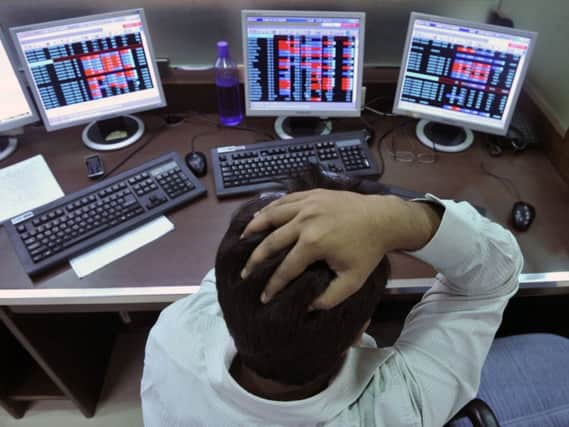Funds ‘price war’ has hidden costs


Millions of investors hold funds through online supermarkets, or platforms, that are being forced to restructure their charges ahead of a regulatory crackdown on kickbacks.
Hargreaves Lansdown, Fidelity and Axa are among the major platforms to have announced new charges over the past fortnight. Barclays Stockbrokers is set to follow suit in advance of new rules taking effect in April banning providers from paying (largely undisclosed) commissions to the online platforms selling their funds.
Advertisement
Hide AdAdvertisement
Hide AdUnder the existing system, said the Financial Conduct Authority, platforms are “able to give the impression they are offering a free service, which means that the investor may not understand the true cost”.
The ban will come into force more than 15 months after the retail distribution review (RDR) stopped providers from paying advisers commission on investment sales. Fund providers have responded by moving to “clean” (commission-free) pricing where the various charges are unbundled. Now the UK’s leading platforms and discount brokers are finally publishing their own charges for the “clean” pricing era.
Hargreaves Lansdown was the first of the big players to go public two weeks ago with a tiered system where it will charge 0.45 per cent a year for investors with holdings up to £250,000; 0.25 per cent between £250,000 and £1m; 0.1 per cent from £1m to £2m and nothing above that.
But those charges are being undercut by Fidelity. It announced last week that investors with up to £250,000 will pay a fee of 0.35 per cent, falling to 0.2 per cent between £250,000 and £1m and to zero above £1m.
Yet while the headline costs look cheap and transparency is improved, the reality is that many investors will be forking out more under the new structures, said Mark Polson, principal at Edinburgh-based consultancy The Lang Cat.
“If there is a price war going on, it’s far from clear it’s for the benefit of investors,” he said. “For every headline rate cut, a bunch of investors also lose out. In Hargreaves Lansdown’s case, some 20 per cent of investors will pay more, sometimes by thousands of per cent.”
For example, an investor with £50,000 in a “passive” fund (which tracks the market) will currently pay £24 to hold that fund within an investment savings account (Isa) on the Hargreaves Lansdown platform. Under the new system they will pay 0.45 per cent, amounting to £225.
Investors wanting to understand exactly what they’ll pay should look not only at the headline charge, but also at the fund charge and event-driven costs such as trading fees. “Only when you know all three and how they’ll apply to you can you really compare prices,” said Polson. “Headline rates might be fixed charges [such as those from Alliance Trust Savings or Interactive Investor] or percentage based, ranging from 0.2 to 0.5 per cent, while some providers have a mix.”
Advertisement
Hide AdAdvertisement
Hide AdThe wrapper the investments are held in makes a difference too, as charges are usually more expensive for Sipps than Isas.
People with typically less than £50,000 to invest are better off with providers including Charles Stanley and Fidelity, said Polson, while those with more to invest should consider the fixed fee propositions.
“And there are shades of grey in between,” he added. “Investors should be wary of the rhetoric, examine their own investing behaviour, and do the research for the most cost-effective home for their money.”